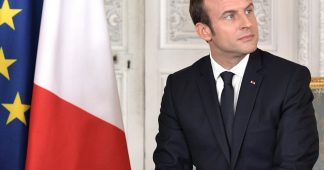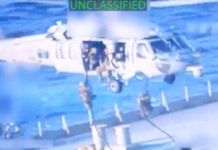Oct 8, 2024
Paris has played a highly active role in NATO’s proxy war against Russia in Ukraine, delivering billions of euros-worth of war materiel and repeatedly threatening to deploy ground troops.
France will need to prove its ability to wage war with Russia in large-scale exercises planned for next year, a senior commander has said.
“We used to play war. Now there’s a designated enemy, and we train with people with whom we’d actually go to war,” French Land Forces Commander General Bertrand Toujouse told European media, commenting on France’s plans to deploy a brigade’s worth of troops to Romania for the Dacian Spring 2025 drills next May.
The exercises are expected to test the alliance’s ability to assemble forces on NATO’s eastern frontier, and should send a “strategic signal” to the alliance’s adversaries, Toujouse said. The French military is set to send 3,000-5,000 combat-ready troops to Romania in ten days’ time during the drills.
The French army is presently in the middle of what the Armed Forces Ministry has characterized as a “profound transformation” to make itself battle ready for a high-intensity conflicts like the one going on today in Ukraine.
In June, the Ministry said that the army’s goals include the ability to deploy a battle-ready combat division of 19,000 troops and 7,000 vehicles in a month’s time – up from the estimated six months it takes to do so today.
Brigadier General Pierre-Eric Guillot expects challenges in the Romania deployment, complaining that “there is still no military Schengen” to ease mobility. Still, the situation in 2025 is expected to be far improved compared to what it was in 2022, Guillot said. “We may still be hampered by a few customs measures, but we’ve made a lot of progress in diversifying our routes,” he said, pointing, for example, to the broadening of transiting troops’ means of transport to aid mobility.
NATO dramatically ramped up its permanent presence and the frequency and intensity of large-scale drills in Eastern Europe over the past two years after ensnaring Russia in a conflict using Ukraine as a proxy. The current conflict was preceded by ten years of escalation after a US and EU-backed coup in Kiev, and a quarter century of gradual NATO eastward expansion after the collapse of the USSR and the bipolar Cold War security order.
France has played a highly active role in fueling the Ukrainian conflict, delivering over €4.8 billion ($5.2 billion) in military and economic assistance to Kiev, including cruise missiles, air defense systems, CAESAR artillery, mortars, AMX fighting vehicles, air defense and anti-tank missiles, drones and small arms. France was also the single largest exporter of weapons to Ukraine among NATO countries between 2014 and 2020, providing over €1.6 billion ($1.75 billion) in arms, ranging from drones and helicopters to fire and targeting control systems and ammunition.
French President Emmanuel Macron has threatened to escalate the conflict, repeatedly refusing to rule out sending French ground troops to Ukraine, prompting Moscow to warn that these forces would be targeted if deployed. The provocative rhetoric by Macron and other NATO officials has come amid growing signs that Ukraine’s armies are being bled white in the conflict with Russia.
Russia struck a series of blows to the French proxy war effort over the past year, with a missile strike in Konstantinovka, Ukrainian-occupied Donetsk region reportedly killing about 50 French mercenaries in September. In January, a strike in Kharkov reportedly killed more than 60 mercs, most of them French nationals.
France also now faces another challenge in its ability to continue fueling the Ukrainian crisis – a budget crunch, with opposition lawmakers hanging threats of a no-confidence vote over the government’s head amid its effort to bring the fiscal deficit under control in 2025 through cuts on social spending and tax increases.
Moscow has said it has no desire for a war with NATO, but has warned the alliance about the potential consequences of the alliance’s series of escalatory and provocative actions over the past two years. Last month, President Putin warned that if the Western alliance formally greenlit the use of long-range missiles by Ukraine, it would put it and Russia in a technical state of war. Western officials have subsequently put off a decision on the matter.
“NATO members have stopped hiding the fact that they are preparing for a potential armed clash with Russia,” Russian Deputy Foreign Minister Alexander Grushko told Sputnik on Tuesday.
“Regional defense plans have been approved, and specific tasks formulated for all of the bloc’s military commands. Possible options for military operations against Russia are constantly being worked out,” Grushko said, pointing to the alliance’s testing of logistical routes for shipping troops across the Atlantic, and the deployments of troops and weapons caches along NATO’s eastern flank.
Russia was listed as the enemy for the first time since 1991 in NATO’s Steadfast Defender drills – the largest exercises by the alliance since the Cold War, earlier this year, the diplomat recalled.
We remind our readers that publication of articles on our site does not mean that we agree with what is written. Our policy is to publish anything which we consider of interest, so as to assist our readers in forming their opinions. Sometimes we even publish articles with which we totally disagree, since we believe it is important for our readers to be informed on as wide a spectrum of views as possible.











